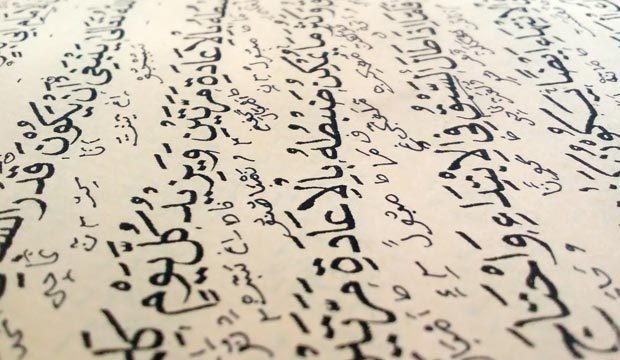To talk about Moroccan Arabic we first have to know that there is the official standard modern Arabic which is the one studied in schools and with which almost all literature and press is written, each country has its own dialect of Arabic that may differ much or little from the other dialects, for everyday speech; in the case of Morocco, this dialect is called Dariŷa.
The official spoken languages of Morocco are three: French, traditional (or classical) Arabic and Berber, the latter being the original language of the country and the former a product of the arrival of Islam in the 8th century.

Moroccan Dariŷa is a mixture of Arabic, Tamazight or Berber, French and Spanish, and English. While it is not a mixture as such, it does have quite a few linguistic borrowings from these other languages.
About the language
Although at first glance, the major difference between Maghrebi and Modern Standard Arabic lies in the pronunciation of Maghrebi and its particular lack of vowels, major differences can also be found in grammar, syntax and of course vocabulary so that some intellectuals and political activists insist on asserting the independent language status of Maghrebi or Dariya such as Mourad Alani, writer, university professor, essayist and translator of French and German; Noureddine Ayouch, publicist, media expert and member of the Sakoura Foundation, the essayist Fouad Laroui author of “Le drame linguistique marrocain” on the linguistic situation in Morocco, published in 2011.
Maghrebi or Moroccan is known in Morocco as Dariya, a word meaning “dialect” to differentiate it from Standard Arabic or Classical Arabic. It has no official status in any country, but is used daily not only in the street but also in all Moroccan media, and in the Administration orally at all levels and the government, except in very formal public interventions or particularly solemn occasions.
The main differences in pronunciation compared to classical Arabic consist in the disappearance of many vowels and the change of place of others. Thus, bahr azraq (blue sea) would become bhar zraq. The lack of vowels is one of the features that makes it most difficult for Eastern Arabic speakers who only speak the Levantine or Fus’ha variant of Arabic to understand this language.
Arabic that is not Arabic
There is a serious situation of diglossia between the Moroccan language that predominates in oral communication, advertising, and in informal media such as the Internet, social networks and mobile messaging, and Modern Standard Arabic predominant in formal written media such as the press, administration or literature. The two languages are mutually unintelligible, with differences comparable to those that might exist between Romance languages and Latin.
Modern Standard Arabic is an artificial creation promoted by pan-Arabism as a vehicle for intercomprehension among Arab nations, and is not understood by the uneducated population. Nevertheless, Modern Standard Arabic continues to be the language of education and official culture.
Between 2013 and 2015 there was an intense debate in Moroccan society, politics and the media as a result of the proposal for an educational reform to combat the serious rates of school failure in which, among other measures, the need to include the study of Dariya or Maghrebi as a language of instruction in the early stages of education was raised insofar as it constitutes the true mother tongue of the majority of the population, a measure that was strongly contested by the most conservative sectors and political parties of Moroccan society, and which was finally rejected.
Having said this, one can see appreciate the great debate that exists around whether Moroccan Dariŷa should be considered a separate language and it is that one must know that Arabic is a macro language that encompasses others that may have little comprehensibility, it can be put in the context that it is something similar to what happens with Spanish with Portuguese but still these two are more intelligible, than Moroccan Dariŷa with standard Arabic.
Expansion and influence
Thus it is an oral language with numerous groups of mutually intelligible dialectal varieties originating from the Arabic language, and extending from the westernmost part of Libya to the Western Sahara, so it can be said that there will be many speakers to practice with should you choose to study this variant of Arabic plus should you visit Morocco you will be without problems, as this is the language of everyday use making standard Arabic useless for this task.
I hope this entry will help you and, above all, make you interested, even if it is only a little more, in Moroccan culture.
Read more:
Why Are There So Many Cats In Morocco?
Weddings in Morocco
Excursion to Berkane
Asilah International Cultural Festival
A 5200 Km Morocco Road Trip
Best Things To Do In Ifrane (Morocco)
Where To Eat in Meknes
Best Hotels in Larache
What To Eat in Rissani
Sahara Desert Temperature